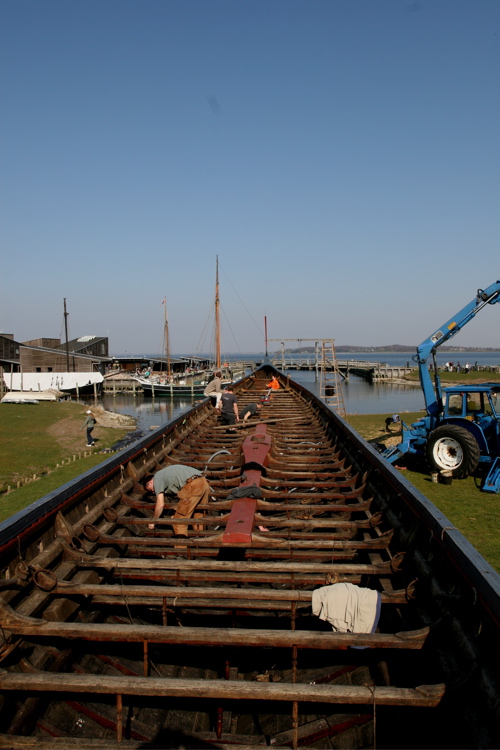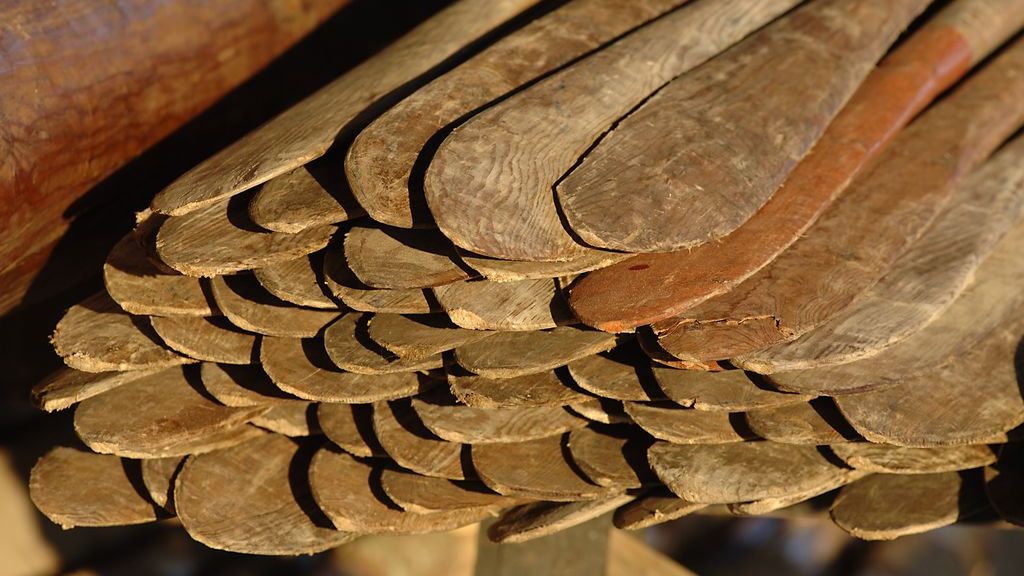Compared to its length a Viking ship like The Sea Stallion from Glendalough is not that heavy a construction.
The secret behind these light constructions created by the Vikings was an extremely flexible hull build to follow the waves instead of forcing its way through.
On this summers sail to Norway the crew could occasionally observe the flexibility of the ship. On Skagerrak with the wind coming agten for tværs and waves reaching 3 – 4 metres the ship would curve like a snake through the water.
To loose in each end
But even though the flexibility is giving the Sea Stallion its strength and toughness; there’s a limit for everything.
That limit was reached this summer, were the ship was a bit to lively at both ends – front and astern – and wooden nails began to work their way out of the hull and frequently had to be hammered back in by the boat builders.
Before spring cleaning boat builders from the Viking Ship Museum have therefore placed solid oak three strakes front and astern to strengthen the ship. In the middle of the ship there’s no problem because the keelson – a large piece of oak holding the mast – is stabilizing the ship.
No help from the original
Unfortunately boat builder at the Viking Ship Museum couldn’t study the original to see how the Vikings strengthen the ship back then. That part of the original ship - Skuldelev 2 – was never found, when the ship was excavated from the bottom of Roskilde Fjord in during the sixties.
So for the time being the boat builders have placed these solid strakes of oak lengthwise and in the same height of the floor.
And that is not necessarily a test that too many crew members will appreciate. Both the front ship and astern are using the floor to sleep on their time off.



